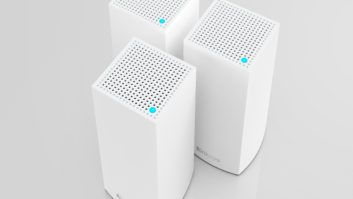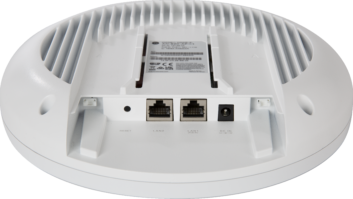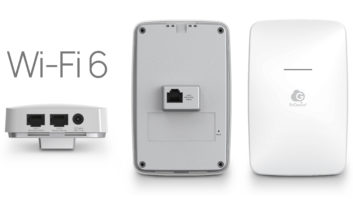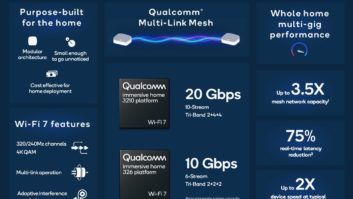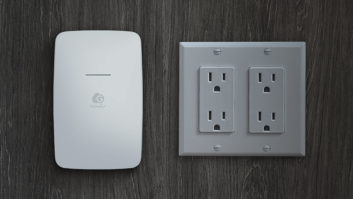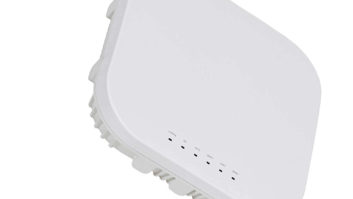The latest Wi-Fi standard is finally here…sort of. Wi-Fi 6 should be fully ratified by mid-2020 and it offers fundamental improvements over previous Wi-Fi standards. From a new naming convention to higher data rates, to more robust connections, and simultaneous data reception or transmission between access points and multiple client devices, Wi-Fi 6 is a wireless networking standard that has been designed from the ground up to overcome some basic wireless networking issues and provide High-Efficiency Wi-Fi.
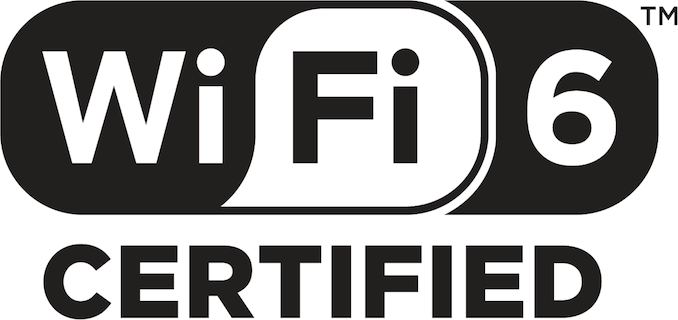
Greater Efficiency Through 2.4 GHz and 5 GHz Frequencies
Wi-Fi 6 will be the second standard to employ both 2.4 GHz and 5 GHz frequency bands, and there are also talks about opening up the 6 GHz frequency band in the future. While the frequency bands may be the same, the size of the subcarrier channels and how they are used for data is completely different from legacy Wi-Fi. Legacy Wi-Fi is based upon a 20 MHz wide channel divided into 64 312.5 kHz subcarrier channels. When transmitting data, the entire transmission must be dedicated to one client and all of the subcarrier channels are used regardless of the size of information being sent. This is extremely inefficient.
Wi-Fi 6 divides that same 20 MHz channel into 256 78.125 kHz subcarrier channels that can be dedicated to up to nine concurrent data transmissions to different Wi-Fi 6 client devices. This allows for efficient use of the spectrum as the number of subcarriers used per conversation can vary based upon the data payload. Additionally, the High-Efficiency Extended Range Single-User (HE ER SU) format was added to maintain connections for devices connected outdoors via 2.4 GHz with low SNR.
Wi-Fi 6 will continue to use channel bonding and MiMo along with newly added MCS rates using 1024QAM to provide even higher data rates than Wi-Fi 5, but, a significantly higher signal will be required to achieve the new MCS rates. The maximum theoretical Wi-Fi 6 SU-MiMo PHY rate will be 9.6 Gbps, however, due to the fact that 160 MHz channels offer no co-channel interference protection and most client devices are only capable of two or three spatial stream MiMo, the highest realistic PHY rate will be 1.8 Gbps for a three spatial stream device on an 80 MHz channel. As with all Wi-Fi, the actual data throughput will be approximately 1/3 of the negotiated PHY rate.
Extended Battery Life
A couple of other new features to note that help make Wi-Fi 6 the first High-Efficiency Wi-Fi standard are Targeted Wait Times (TWT) and SSID coloring. TWT will allow client devices to notify an access point that they are capable of going to sleep and waking up at specific times, provided by the AP, thereby significantly extending battery life. SSID coloring will notify a Wi-Fi 6 client device with a request to transmit, if another device is currently transmitting to the same access point, thereby forcing it to wait until the first device is done before transmitting or if it can transmit immediately because the current transmission is to a different access point.
Minimizing Potential Confusion
In the past, it was very difficult for consumers to know which Wi-Fi standard was best or which one was compatible with the devices in their home. Knowing whether 802.11g was better than 802.11n or if their new iPhone could use 802.11ac was extremely confusing. The Wi-Fi Alliance developed Generational Wi-Fi to answer these questions.
Generational Wi-Fi is a marketing program that introduces a new consumer-friendly naming convention assigned to generations of Wi-Fi, based upon major Wi-Fi technology (PHY) releases. Wi-Fi 4 is 802.11n, Wi-Fi 5 is 802.11ac, and Wi-Fi 6 is 802.11ax. Wi-Fi generation names provide manufacturers, operators, and end-users with an easy-to-understand description for both the Wi-Fi technology contained in a device and the connection that device makes with a Wi-Fi network. The goal is to allow consumers to easily recognize the type of Wi-Fi capability found in their devices and network connections, much as they recognize today through cellular identification of capabilities, such as 3G, 4G, etc.
The Wi-Fi Alliance provides a set of UI visuals for use in device UI by OS or device vendors to identify the type of Wi-Fi connection a device is making at a given time on a network. A certification program by the Wi-Fi Alliance identifies the specific standard built into Wi-Fi-enabled devices. For example, the Ruckus R750 was the first Wi-Fi 6 certified access point and the Samsung Galaxy Note 10 was the first Wi-Fi 6 certified smartphone.
The Next Big Thing
Wi-Fi 6 will bring higher efficiency and more robust connections, higher data rates, and potentially longer device battery life. Additionally, the new Generational Wi-Fi naming conventions will help consumers understand whether or not their smartphone or other Wi-Fi device is connecting via Wi-Fi 6 or a legacy Wi-Fi standard. Together, the technological and marketing initiatives help position Wi-Fi 6 as a huge enhancement to the smart home industry.
Access Networks’ technical trainer Nathan Holmes is not only a networking subject matter expert, but also has an extensive background in the integration channel, which provides for a unique understanding of the networking challenges faced by todays residential integration dealers. Responsible for all technical training initiatives targeted at the residential integration firm dealer base for Access Networks, Nathan developed the Technical trainer role to be a bridge between the company’s engineering and sales departments.
